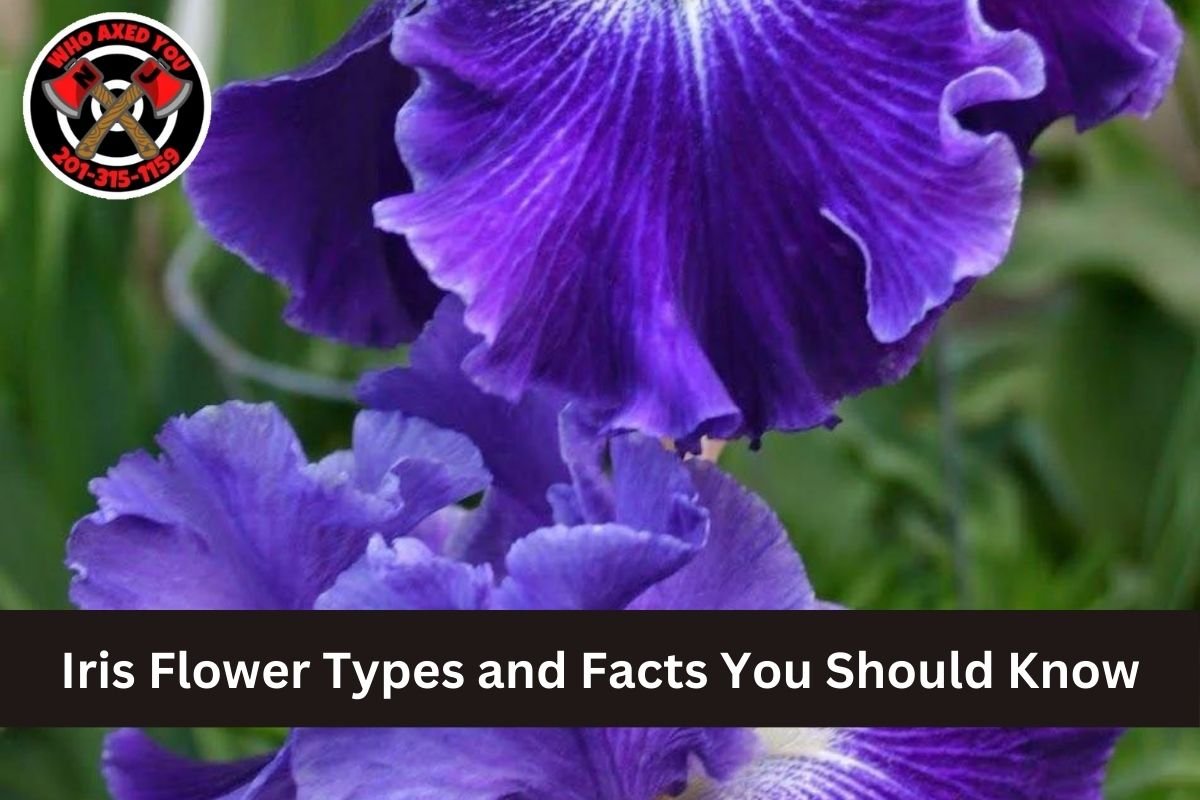Iris Flower Types and Facts You Should Know :- In addition to being a popular and diverse genus of flowering plants, the iris flower is named after the Greek goddess who rode rainbows. There are over 300 different species of iris flowers.
Iris Flower Types and Facts You Should Know
It is well known that irises are characterised by their vivid colours, complicated structures, and exceptional adaptability. The following is an exhaustive reference that provides information on a variety of common species of irises as well as fascinating facts about these lovely flowers.
Also Read :- 7 Must Have Under 10 Min Mediterranean Ingredients For Healthy Kids Breakfast Moms Will Love You
Irises of Various kinds
Bearded Irises (Iris germanica):
Bearded irises are perhaps the most recognisable form. The fuzzy “beard” on each of their falls (the lower petals) is the reason for their moniker. These irises are distinguished by their enormous, showy flowers and diverse colour palette. The ease of cultivation and their capacity to flourish in a variety of climates are the reasons they are favoured, and they bloom in late spring.
Siberian Irises (Iris sibirica):
Siberian irises are resilient and adaptable, frequently observed in gardens throughout temperate regions. They produce elegant, butterfly-like blooms in hues of blue, purple, and white, and they have slender, grassy foliage. Siberian irises are frequently cultivated in rain gardens or near water features, as they prefer damp soil.
Japanese Irises (Iris ensata):
Japanese irises are a visually appealing addition to any garden, distinguished by their large, flat flowers. They are frequently adorned with intricate veining and are available in a variety of flamboyant colours, such as blue, purple, and white. These irises are ideal for wetland areas or adjacent to ponds, as they flourish in acidic, water-retentive soil.
Dutch Irises (Iris x hollandica):
The elegant, slender stems and vibrant flowers of Dutch irises make them a popular choice for floral arrangements. Typically, these irises are blue, purple, yellow, or white. They are frequently cultivated from bulbs and produce blooms from late spring to early summer, which contributes a dash of sophistication to bouquets and gardens.
Louisiana Irises (Iris hexagona):
Louisiana irises are renowned for their breathtakingly diverse colours and their ability to withstand wet conditions. They are indigenous to the marshes and wetlands of the southern United States. They are a distinctive addition to water gardens, as they prosper in rich, acidic soil and are available in a variety of colours, including deep purple and bright red.
Interesting Facts About Irises
Historical Significance:
Throughout history, irises have served as emblems of royalty and authority. Particularly associated with the French monarchy, the fleur-de-lis is a well-known emblem that is used in coats of arms and is a stylised iris. The flower is also depicted in ancient Egyptian mythology and art.
Cultural Influence:
The iris is commemorated in Japan during the Hanashōbu festival. These flowers are admired by the Japanese for their attractiveness and the way in which they represent the purification of the body and spirit.
Medicinal Applications:
Traditionally, iris roots, particularly those of the Orris variety, were employed in traditional medicine as a treatment for a variety of maladies and for their purported anti-inflammatory properties. In spite of this, their utilisation in contemporary medicine is restricted by their potential for toxicity.
Hybridization:
Extensive hybridization is partially responsible for the diversity of irises. A wide variety of colours, sizes, and forms have been achieved as a result of the cultivation of numerous hybrid varieties by botanists and gardeners. This renders irises highly adaptable to a variety of horticultural aesthetics.
Flexibility:
Irises are exceptionally adaptable and can thrive in a variety of environments, including dry, rocky soil and damp, marshy regions. This adaptability renders them a favourite among cultivators who encounter difficult growing conditions.
Pollination:
Bees, butterflies, and hummingbirds are among the pollinators that are attracted to iris flowers. The complex structure of their flowers is engineered to facilitate efficient pollination, thereby guaranteeing the survival of their species.
Propagation:
Irises can be propagated through division, which entails the separation of rhizomes and their subsequent transplantation. This not only facilitates the plant’s growth but also promotes more vigourous flowering.
